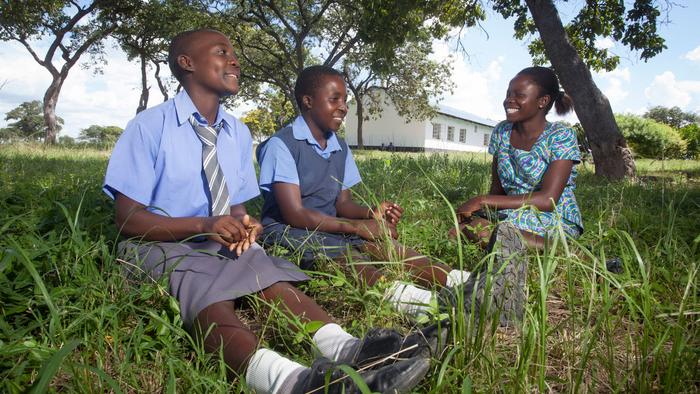Education remains a fundamental pillar for the advancement of individuals and societies. Yet, in lower-income countries, particularly in regions like sub-Saharan Africa and South Asia, girls often encounter formidable barriers to achieving educational parity with their male counterparts. A recent evaluation conducted by the University of Cambridge, focusing on the Girls’ Education Challenge (GEC)—a UK Government-supported initiative designed to enhance educational opportunities for marginalized girls—unveils critical insights into how these challenges can be overcome. The findings underscore the significance of mobilizing young women and their communities as agents of change, scientifically affirming a transformative grassroots approach to education.
The evaluation reveals that the GEC projects, which collectively reached over 1.6 million girls, fostered "virtuous cycles" by embedding educational reform within community structures. It emphasizes that initiatives must extend beyond mere educational incentives; they must create a sustainable environment conducive to learning. The pervasive inequalities faced by girls in lower-income countries—ranging from early marriage to gender-based violence—remain alarming. These issues culminate in significant dropout rates and ultimately thwart the dreams and aspirations of countless young women.
The research reveals that while several educational interventions target marginalization, their effects can often dissipate once funding ceases. This fleeting impact poses a daunting challenge as educational programs grapple with entrenched cultural norms. The GEC projects have learned progressively that the foundation for sustainable change lies in community engagement and participatory methodologies. Through grassroots mobilization, young women are instilled with the skills and confidence required to foster change, ensuring that educational advancements resonate within their familial and community networks.
Pivotal strategies employed in the GEC projects included engaging local leaders and community stakeholders to reshape perceptions about the value of girls’ education. Challenging traditional beliefs, these initiatives nurtured an environment where communities collectively acknowledged and supported the educational aspirations of girls. The integration of influential local figures, including religious leaders and mothers’ groups, proved instrumental in tackling societal norms that perpetuated early marriage and gender discrimination. The local faith leaders in Zimbabwe, for instance, played a role in actively monitoring and reporting cases of child abuse, fostering a culture of accountability and care for young girls.
In Nepal, GEC projects implemented a dual approach, combining direct involvement of parents in the education sphere with the mobilization of community resources. Local businesses participated by offering work experience opportunities that enriched the girls’ educational pathways. This not only provided practical skills but also bolstered local economies, creating a symbiotic relationship between education and community development. The establishment of parent-teacher associations and management committees facilitated the distribution of essential school supplies, ensuring that girls receive the support necessary to thrive academically.
The findings further stress the importance of empowering young women to take on leadership roles. By training female graduates of GEC-funded programs to conduct life skills sessions and mentoring other students, the projects cultivated a cadre of role models. These young women, now equipped to support their peers, serve not only as educational guides but also as catalysts for cultural change—challenging norms and advocating for increased educational access. The ripple effects of this empowerment are profound, with advancing educational attainment seen as a visible pathway to changing community perceptions about the value of girlhood and education.
An intriguing aspect of the GEC projects is their deliberate alignment with national and local government policies. Effective integration into government priorities ensures that educational innovations do not operate in isolation. For example, in Nepal, program achievements were reinforced by local authorities’ direct engagement, creating a harmonized ecosystem for educational development. Building partnerships with government entities not only enhances resource allocation but also solidifies the commitment to sustaining progress in girls’ education.
While the GEC projects indicate a positive trajectory toward sustained educational development, challenges remain. The evaluation highlights that girls’ education is acutely susceptible to external shocks. Economic instabilities, environmental crises, and conflicts can swiftly unravel progress. Insightful anecdotes from field workers reveal that during periods of financial distress, families may revert to regressive practices, such as early marriage, to alleviate financial burdens—demonstrating the precarious nature of educational interventions.
Dr. Amna Ansari, the lead author of the report, encapsulates the urgency of continued commitment to girls’ education amid crises. She states, "We need the international community and national governments alike to remain committed to supporting it." The evaluation elucidates that effective change emerges when the community mobilizes, girls are positioned as leaders, and educational initiatives are intricately woven into the local context. Therefore, sustaining momentum requires collective effort and perseverance in the face of adversity.
As educational programs evolve, one lesson crystallizes: the importance of viewing education within a holistic framework transcending mere academic milestones. True educational reform fosters resilience within communities, equipping girls with the tools necessary not only for personal advancement but also for collective social prosperity. As girls rise into positions of leadership and visibility, they redefine education’s role, establishing a new paradigm where quality education becomes synonymous with community strength and progress.
In reflection, the GEC projects emphasize that long-lasting educational gains are possible, and they illuminate pathways toward achieving gender equity in education. The findings mark a significant stride toward reimagining educational frameworks, addressing deep-rooted social issues, and fostering a future where every girl can envision a successful and fulfilling life through education.
The report offers not only hope but tangible strategies for analysts, policy-makers, and NGOs invested in the landscape of education. By understanding and implementing the principles derived from the GEC experience, stakeholders can ensure that initiatives are financially, socially, and culturally sustainable, cultivating an enduring commitment to education for all.
Subject of Research: Girls’ Education and Community Empowerment
Article Title: Transforming Girls’ Education: Lessons from the Girls’ Education Challenge
News Publication Date: October 2023
Web References: Girls Education Challenge
References: Latest Evaluation of GEC Projects
Image Credits: Jon Pilch/CAMFED
Keywords: Girls’ education, community empowerment, educational equality, sustainable change, GEC projects, social norms.




